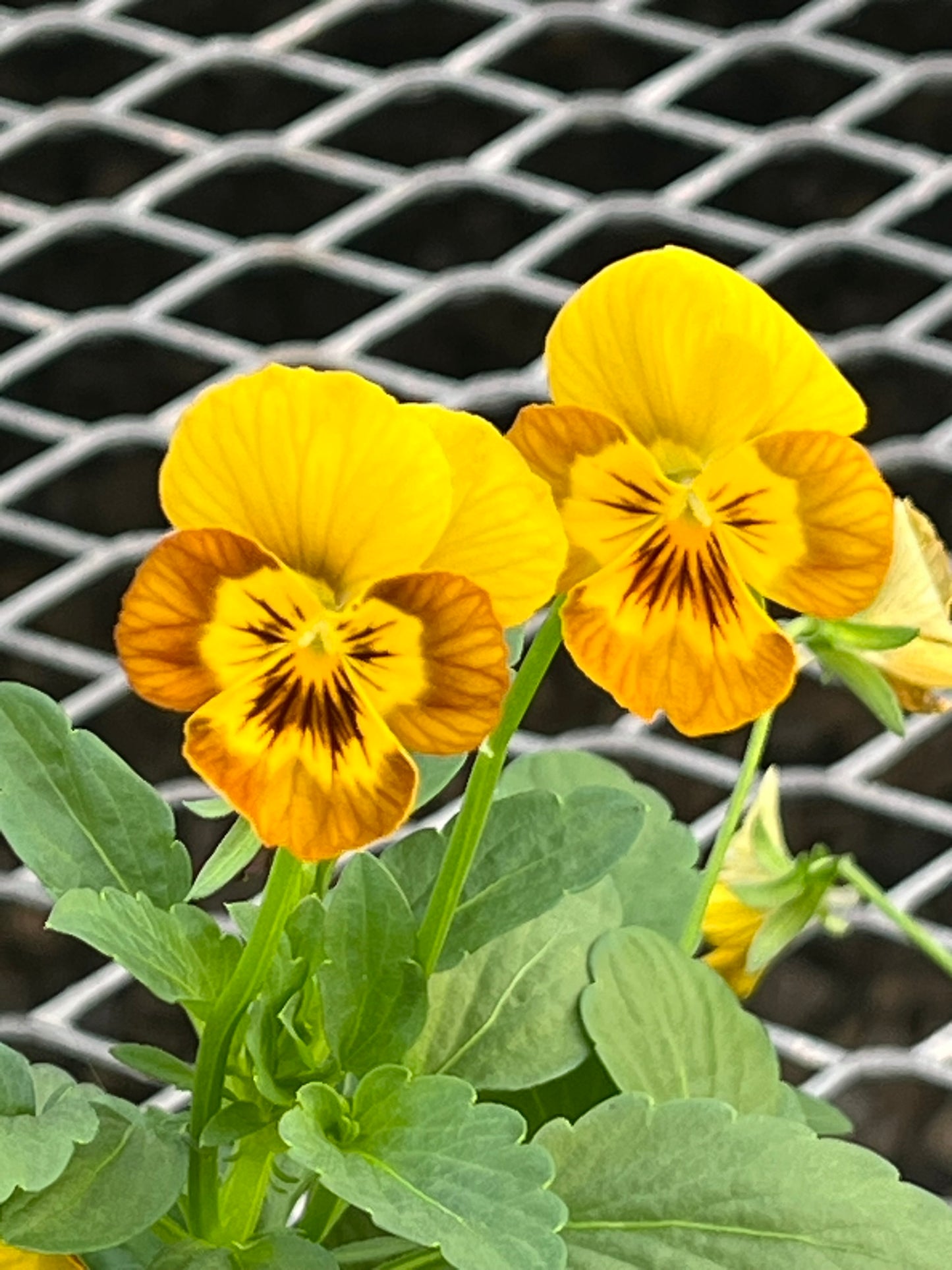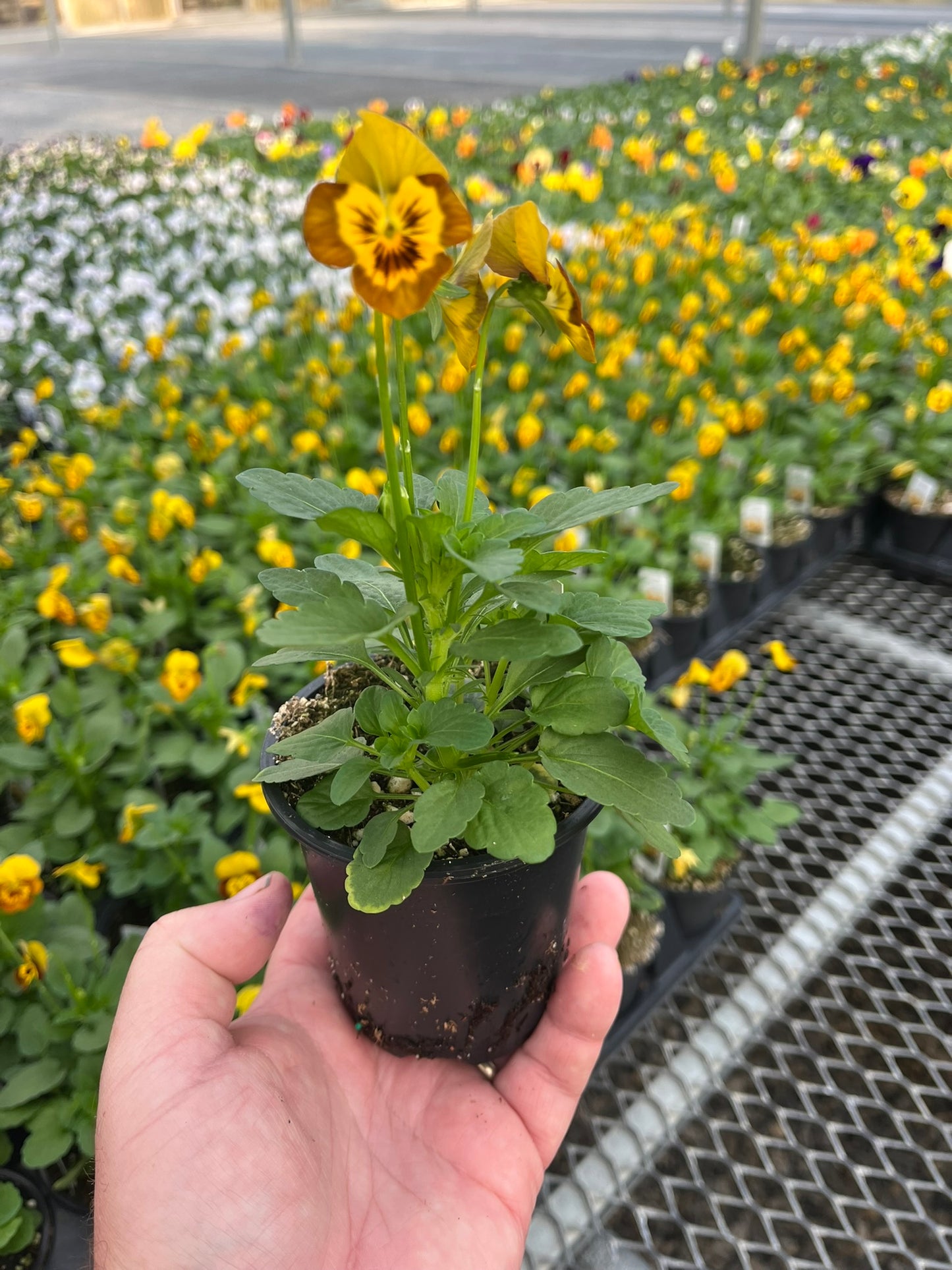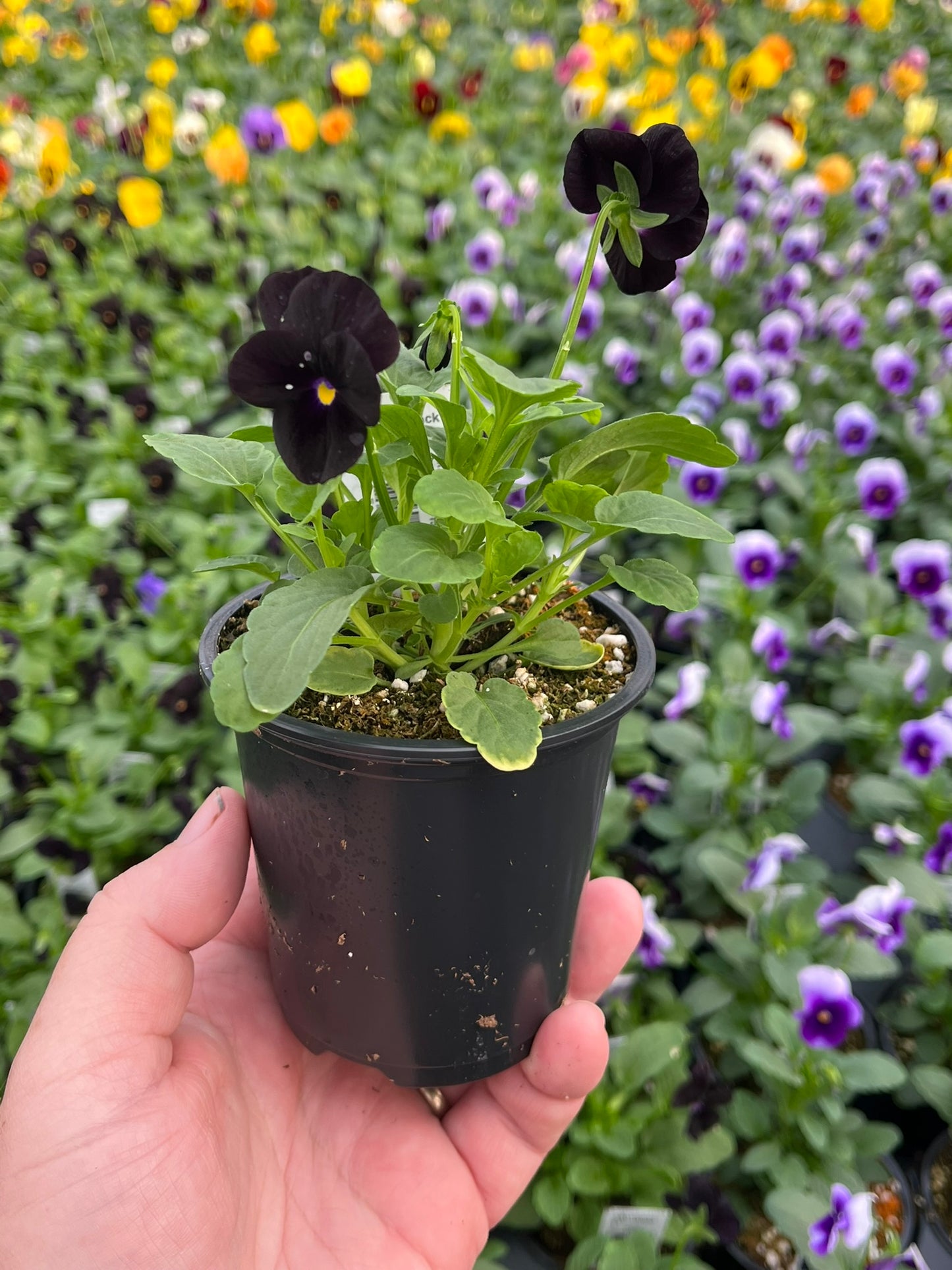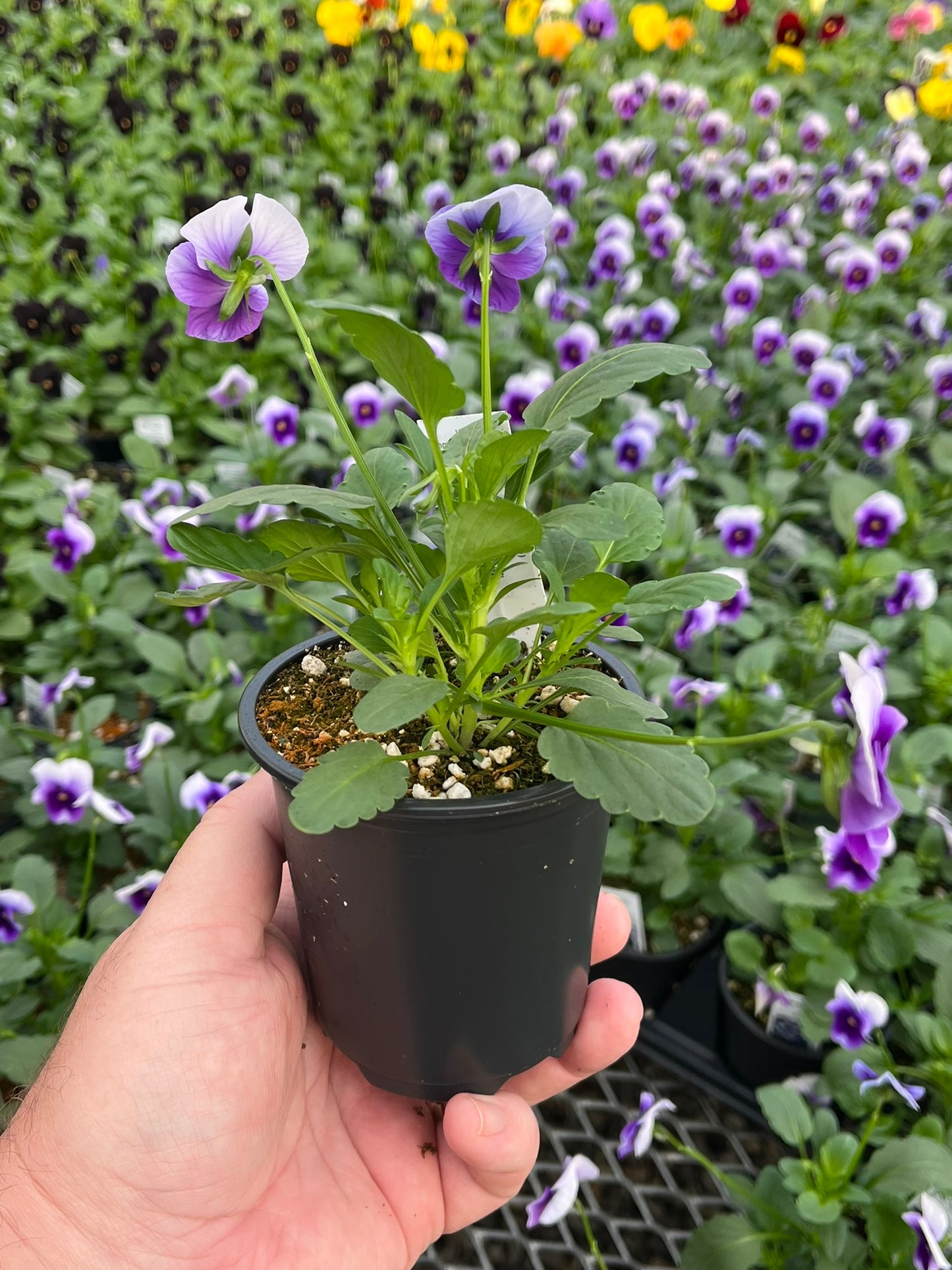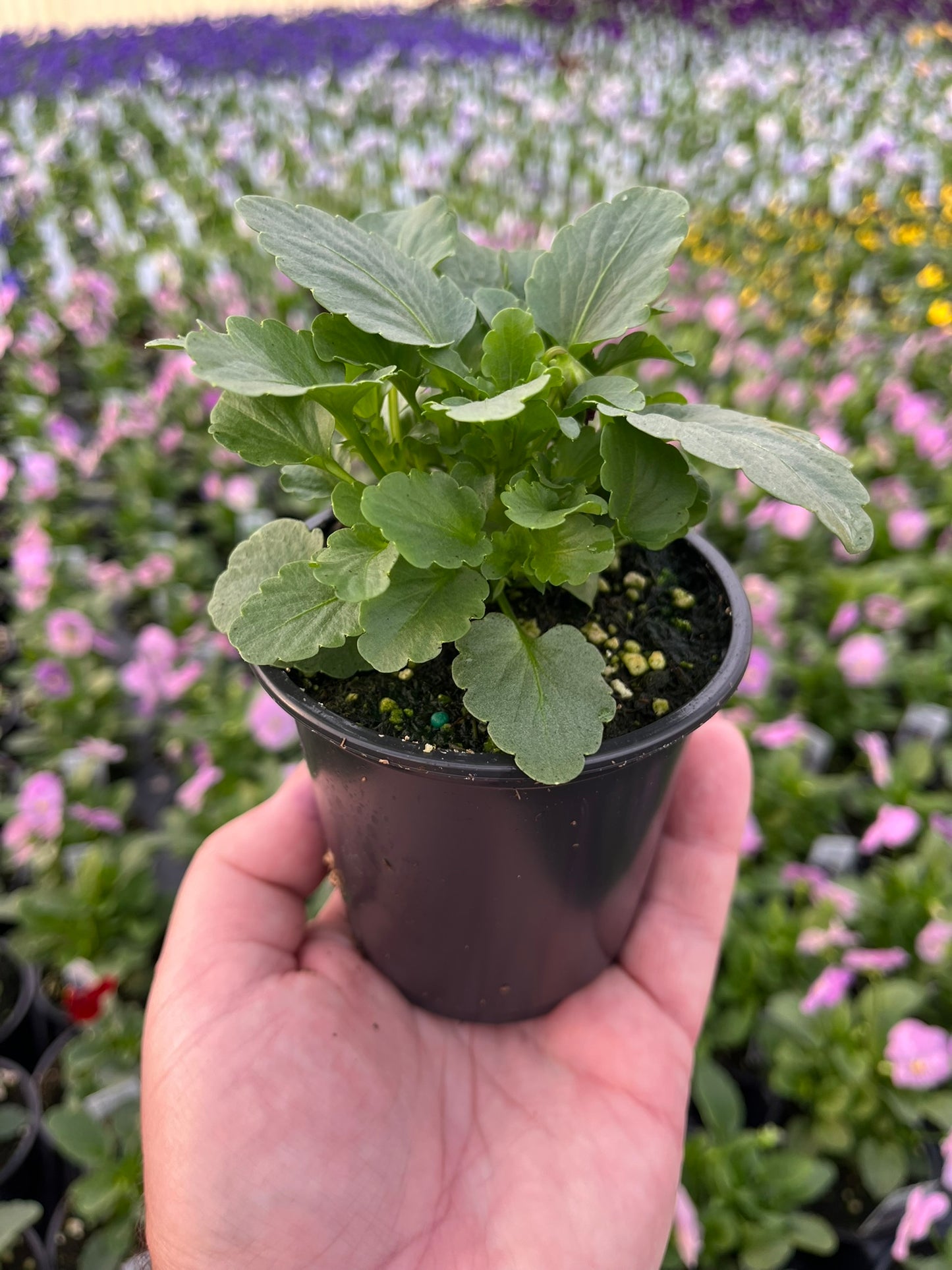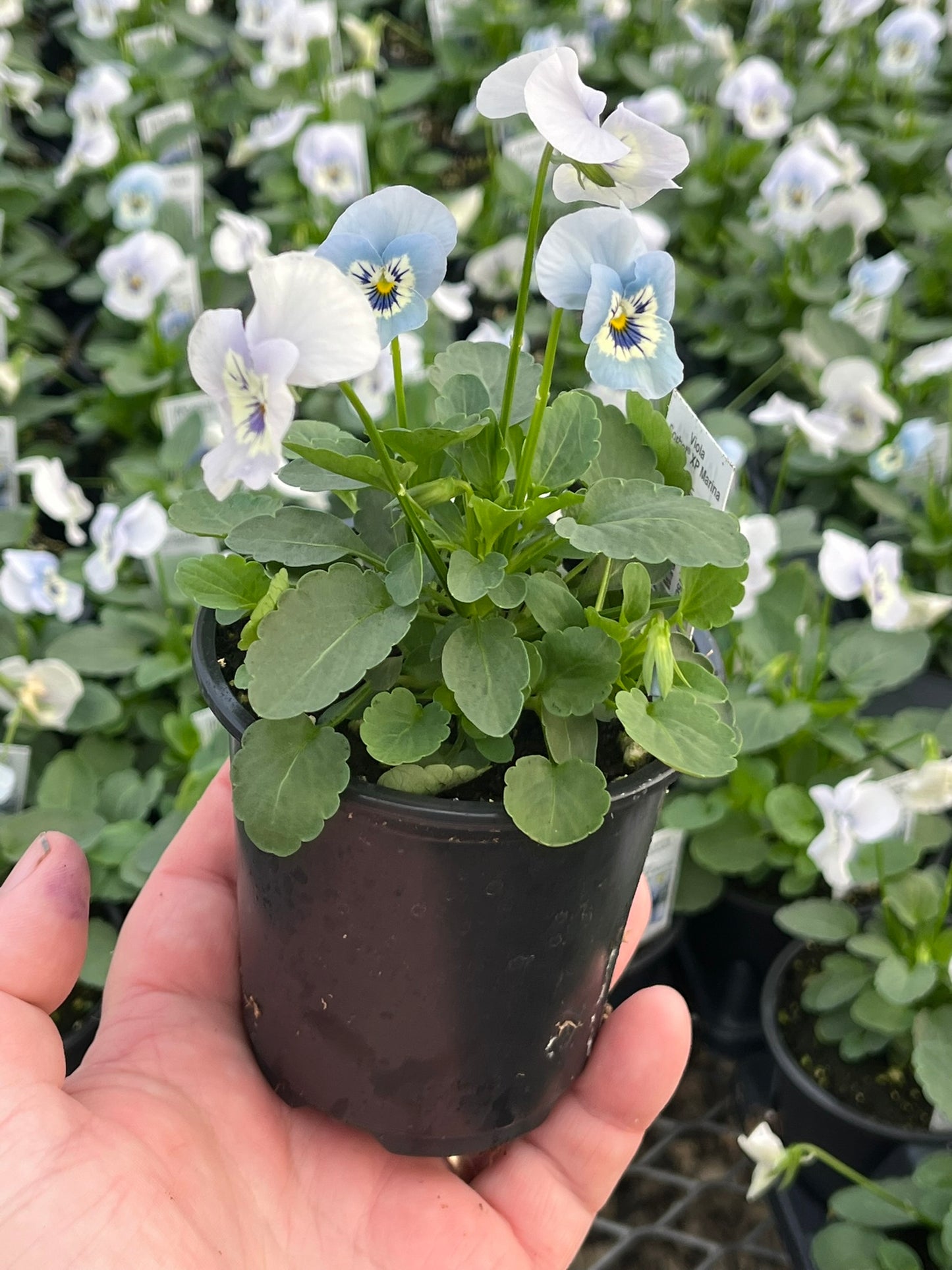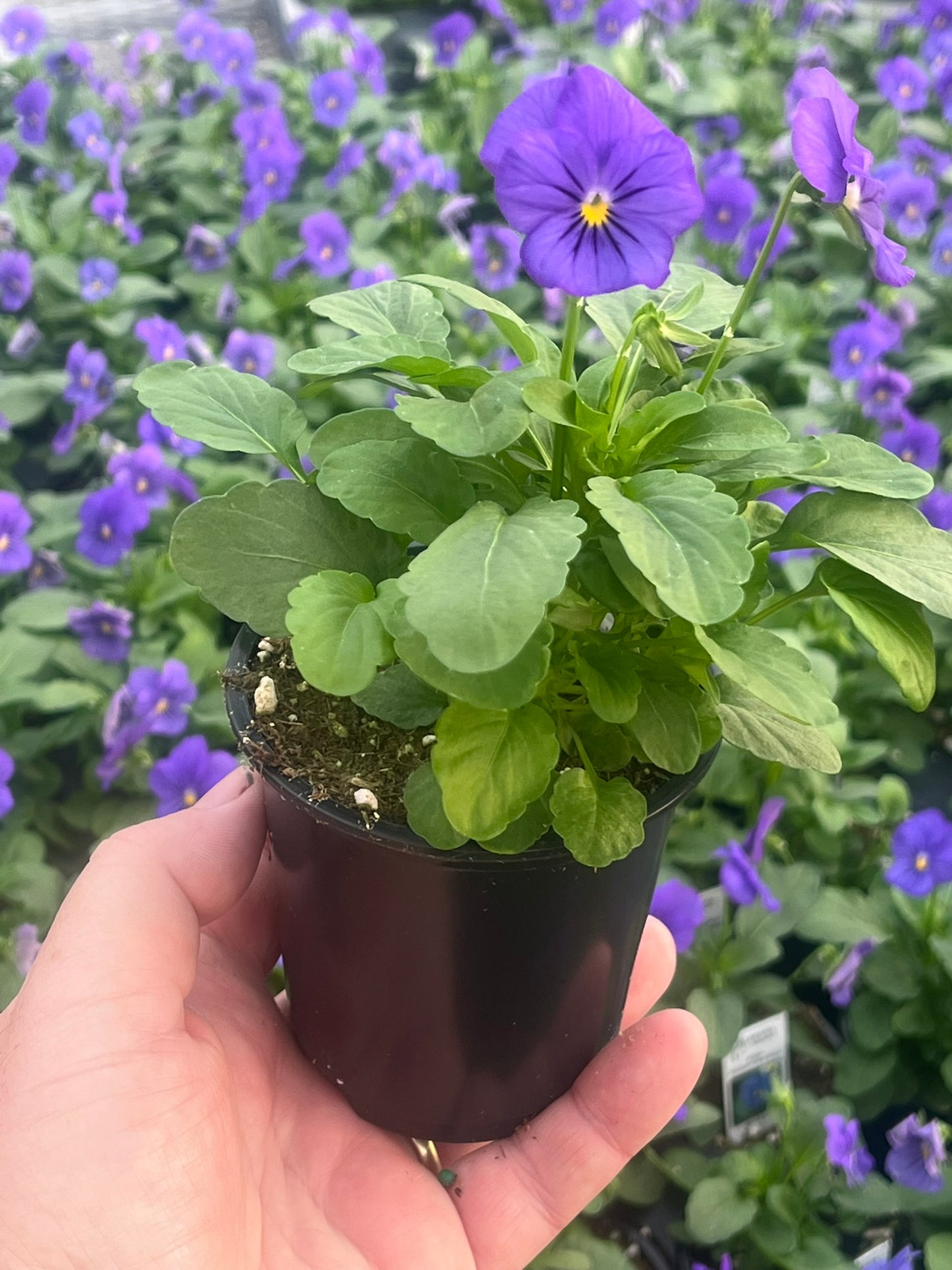Plant Hoarder
Viola, Honeybee
Viola, Honeybee
Couldn't load pickup availability
Share
Hardiness Zone:4, 5, 6, 7, 8, and 9
Sun Exposure:Full Sun and Part Shade, Mostly Sun
Viola ‘Honeybee’ — Warm Honey Tones for Cool-Season Glow
Looking for color that feels sunny even on crisp days? We’ve got you. Viola ‘Honeybee’ brings cheerful, nectar-rich tones to beds, borders, and pots when many plants slow down. Petals blend warm yellow, soft honey, and a hint of copper—like sunlight in a flower. The look is bright but calm. And most of all, it’s steady. Blooms arrive early, keep coming, and make every space feel alive.
In other words, if you want easy color with a friendly vibe, this is it.
Why We Love ‘Honeybee’
This viola is about warmth. The petals glow like a tiny sunset, with a golden eye that draws you in. Up close, you see fine whiskers and a soft blend of shades. From a few steps back, the mass reads as a mellow honey yellow. It plays well with so many plants. Instead of fighting for attention, it lifts the whole scene.
We also love how reliable it is in cool weather. Violas thrive when nights are crisp. They handle light frost, bounce back after cold snaps, and bloom in waves. After more than a few seasons of planting them, we’ve learned a simple truth: small flowers can carry big displays.
Where ‘Honeybee’ Shines
-
Front borders and edging: Low, tidy mounds create a neat ribbon of warm color.
-
Containers and window boxes: Compact habit, nonstop flowers, instant curb appeal.
-
Hanging baskets: Gentle trails soften edges and add motion.
-
Bulb partners: Frame tulips, daffodils, and hyacinths with a living halo of honey tones.
-
Entry accents: A pair of porch pots turns a doorway into a welcome.
Instead of scattering plants, cluster three to five containers for a pulled-together look. The honey hues tie everything together.
Quick Specs
-
Type: Cool-season annual (often treated as annual even where winters are mild)
-
Bloom Window: Fall to spring in mild climates; spring to early summer in cooler areas
-
Habit: Compact mounds with many small blooms
-
Light: Full sun to part shade (give light afternoon shade as temperatures rise)
-
Soil: Loose, well-drained, rich in organic matter
-
Water: Keep evenly moist; avoid soggy roots
-
Good For: Beds, baskets, borders, bowls, bulb frames, color-themed designs
Color That Plays Well With Others
Warm yellow tones work like good lighting. They make neighbors look better. Viola ‘Honeybee’ is a team player:
-
Honey + White: Clean and bright with white alyssum or white pansies.
-
Honey + Blue: Calm balance with blue violas or forget-me-nots.
-
Honey + Purple: Classic contrast—try with purple pansies or heuchera.
-
Honey + Silver: Modern mix with dusty miller or artemisia.
-
Honey + Chartreuse: Fresh, lively pop with creeping Jenny or lemon-lime foliage.
Instead of guessing, repeat two or three partners across the bed. The rhythm feels intentional.
Planting: A Simple Start
-
Choose the spot. Sun to part shade is best. In warming weather, a little afternoon shade keeps blooms longer.
-
Prep the soil. Mix in compost to improve drainage and hold gentle moisture.
-
Set spacing. Plant close enough that foliage just touches at maturity for a full, carpeted look.
-
Water in. Soak the root zone after planting to settle soil around roots.
-
Mulch lightly. A thin layer reduces splash and helps maintain even moisture.
Container Tips We Use
-
Pick pots with real drainage.
-
Use a high-quality potting mix (not garden soil).
-
Add a slow-release fertilizer at planting.
-
Top up with a gentle liquid feed every 2–3 weeks for steady color.
Care: Easy Steps, Big Return
-
Water: Keep soil evenly moist. Not dry. Not soggy.
-
Feeding: Light, regular feeding = more flowers over a longer season.
-
Deadhead: Pinch off spent blooms. In other words, remove the old to invite the new.
-
Shear if leggy: A light trim wakes up fresh growth and a new flush of flowers.
-
Heat note: When summer heat arrives, blooms slow. Swap to warm-season annuals, then bring violas back in fall.
Seasonal Rhythm You Can Trust
Violas love cool air. Plant in fall for winter-to-spring color in mild regions. In colder zones, set plants as soon as the soil can be worked in spring. Enjoy the show until real heat settles in. It’s a simple rhythm—and once you feel it, you’ll look forward to the next round.
Design Moves That Always Work
-
Halo your bulbs: Ring daffodils or tulips with a low band of ‘Honeybee’ for a pro finish.
-
Warm welcome: Two porch planters with ‘Honeybee’ and white alyssum around the rim.
-
Monochrome calm: A shallow bowl of all ‘Honeybee’ gives a soft, elegant glow.
-
Pathway ribbon: Edge walks with a steady band of honey color to guide the eye.
-
Honey mix: Pair with blue violas and silver foliage for a balanced, high-contrast trio.
Companion Ideas
-
Cool flowers: Pansies, alyssum, lobelia, nemesia
-
Foliage friends: Dusty miller, lamb’s ear, heuchera, ornamental kale
-
Spring bulbs: Tulips, daffodils, grape hyacinths
-
Herb accents: Thyme or sage for a soft cottage touch
These partners share similar needs, so care stays simple and results stay strong.
FAQs — Quick Answers
Does ‘Honeybee’ have fragrance?
Yes, a light, sweet scent on mild days. It’s gentle, not heavy.
Will it attract pollinators?
On warmer days, bees will visit the open, nectar-rich blooms.
Sun or shade?
Full sun to part shade. In warm regions, give afternoon shade to extend bloom.
Can I use the flowers in the kitchen?
Many gardeners use viola blooms as garnish. Only use flowers grown without chemicals and confirm edibility for your needs.
Seeds or starter plants?
Both work. Starter plants give quick impact. Seeds are ideal for mass plantings and budget projects.
Troubleshooting: Fast Fixes
-
Fewer blooms? Deadhead often and feed lightly. Check for too much shade.
-
Yellow leaves? Improve drainage and ease up on water.
-
Plants stretching? Shear by one-third. Fresh growth follows fast in cool weather.
-
Heat slump? Replace with summer annuals and replant violas when temperatures drop.
Instead of fighting the season, move with it. Violas reward that rhythm.
What You’ll Receive
Depending on timing, Viola ‘Honeybee’ is offered as robust starter plants for beds and containers or as quality seed for sowing. Either way, you start with clean, vigorous stock and the warm color you’re after. We focus on healthy roots and fresh growth so you can plant with confidence.
How We’d Use It This Week
Start at your front entry. Fill a pair of pots with ‘Honeybee’ and tuck in white alyssum around the rim. Edge a sunny path with the same viola for a pulled-together look. After more than a week, buds open in waves. Keep moisture steady. Snip old blooms. Enjoy the warm, honeyed glow every time you step outside.
Sun-Sweet Color, Ready for Your Garden
